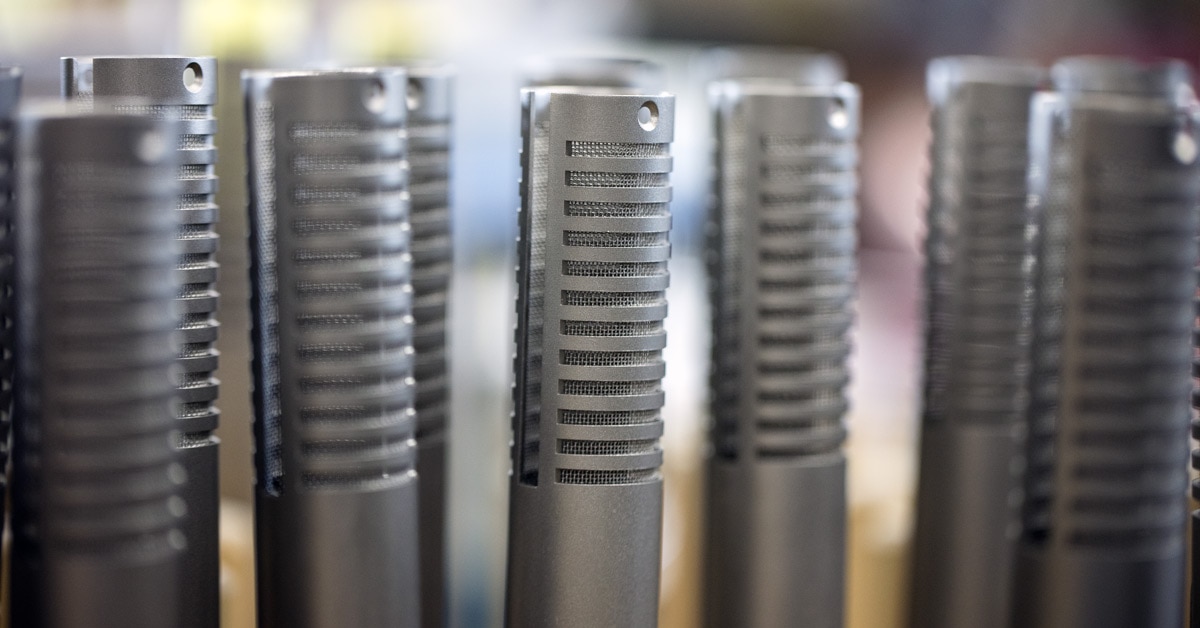Rick Perrotta’s resume is one thoroughly drenched in music. Capitalizing on his years as an audio tech and engineer, Rick became a partner at Baby’O Recorders — a major player on the 80's LA studio scene. Later, he co-founded Matchless Amplifiers, the brand that helped launch the boutique guitar amp category. Saying the amp business had “grown too big to be fun,” Rick sold his interest in the mid-'90s, turning his attention to studio gear instead. That led to a fateful meeting with David Royer and John Jennings who at the time were building condenser microphones in what Perrotta describes as “a very crowded market.”
Around 1995, this trio of audio technician/designers, augmented by musician-producer and club owner Rafael Villafane, set up a small lab in Burbank to develop the gear that called to them. At first, efforts were focused around condenser mics and mic preamps. Then one day, Royer showed Rick a small cylindrical mic. It was a prototype for a ribbon mic — one that would be marketed to both studio professionals as well as the emerging home- and project-studio markets. What emerged at Royer Labs turned out to be pivotal.
Originally developed in the 1920s, ribbon mics had fallen out of favor due to their fragility, bulk and cost. But some engineers babied and repaired their vintage ribbon mics, seeing their superb sound capture as a worthy tradeoff. Royer took on the challenge of addressing the liabilities of ribbon technology while exploiting its remarkably detailed and smooth pickup characteristics.
Ribbon mics were largely replaced in studios of the 1950s and ‘60s with condenser mics that seemed to do well at capturing sources on the magnetic recording tape of the day. But a few manufacturers continued to produce small numbers of ribbon mics for the dwindling market of ribbon mic believers.
What Royer brought to the table was the curiosity to experiment with new methods and materials. Using neodymium magnets along with newly developed toroidal transformers, resulted in lighter, smaller mics. Perhaps more critically, Royer developed an offset ribbon design and new ribbon corrugation process that gave these new mics extended SPL-handling capacity — a weak spot in earlier models. Royer’s designs were also tougher; they could be used to close-mic guitar cabinets, unthinkable with older ribbon mics.

“I think it was two years in development before we had a sellable product,” Perrotta recalls. The two mics that resulted from this intense R&D phase, the landmark Royer R-121 and stereo Royer SF-12, were responsible for restoring ribbon mics from obscurity. But first, Royer needed to overcome some pro audio prejudices. Perrotta explains, “In 1998 we went to our first AES show and people thought we were crazy for working with ribbon microphones, which they felt were obsolete and that their development couldn’t be taken any further.”
Looking for a way to overcome these preconceptions, Royer put its new mics in the hands of some top engineers. The response was uniformly positive: producers loved the way Royer captured audio and sounded when recorded digitally. The stereo SF-12 quickly gained fans among classical music producers, too. Word spread and Royer quickly became a critical part of many studio mic lockers.
Turning their attention to the higher output levels found in modern studios, Royer developed a phantom-powered design, the latest version being the Royer R-122 MKII, with 13dB more output than the R-121. The Royer Labs R-122V Vacuum Tube Ribbon Microphone followed with its unprecedented warmth and smooth midrange character. Developed as a benchmark with which to test other designs, it is the gold standard where ribbon technology is concerned.
Today, apart from his role as president of Royer Labs, Rick operates his own home studio dubbed “Shabby Road.” The studio bug never having fully left him, it is here Perrotta subjects his company’s new designs to real-world testing.
Royer’s product line has been traditionally handcrafted in very low quantities. As a result, their mics have significant price tags. More recently, though, the Royer R-10 Ribbon Microphone was introduced in response to mass-manufactured ribbon mics from overseas that target home studio owners. By maximizing economies in manufacturing, the R-10 delivers much of the performance of its more high-end Royer brethren and is also available in a matched pair configuration.

In another exciting development, Royer now offers some very stage-friendly microphones. Their R-122 MKII Live Ribbon Microphone and the new R-10 are particularly rugged, while the Royer SF-24 Live Active Ribbon Microphone is fantastic for capturing orchestras, bringing the company’s smooth, natural sound to the stage.
You’ll find the entire Royer lineup of ribbon microphones and microphone accessories at Musician’s Friend.







































































































































